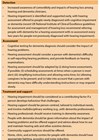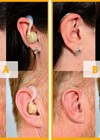Global Ambassador (Audiology) - Australasia
Australia has a blended model of hearing healthcare, with government-supported hearing services free at point of delivery for children and means-tested services for people over the age of 65. The main gap in government-subsidised hearing services is for working-age adults, who must pay for their own hearing care via private providers. The gap in government-subsidised hearing services is particularly problematic for working-age adults on low incomes. Untreated hearing impairment may contribute to under- and un-employment, and economic modelling suggests that reduced productivity due to hearing impairment among working-age adults is the largest financial cost of hearing impairment in Australia.
The government-subsidised hearing service is highly valued by those who receive services, but there is substantial under-utilisation of these services by those who are eligible. A recent independent review of the government hearing services programme identified problems including:
- Lack of access to information and resources to make informed choices.
- Providers being focused on supply and fitting of hearing devices to the exclusion of other options such as communication training.
- Delayed use of hearing devices due to perceived stigma of wearing a device, together with poor readiness.• Difficulties for Aboriginal and Torres Strait Islander people and those from culturally and linguistically diverse backgrounds to access culturally appropriate services.
- The limited availability of services for rural and remote areas and those living in aged care homes.
Improvements in the existing government hearing services programme may go some way to addressing these issues. Expanding eligibility for government-subsidised hearing services to working-age adults on low incomes would also be positive step.
Latest Contribution
Commentary: dementia, hearing loss, and the danger of professional rabbit holes
The Lancet, a world-leading general medical journal, has a global impact. Its commissioned report into dementia prevention, intervention and care has been cited over 6000 times and has further been reviewed and updated in 2020 and now 2024. Here, Profs...
Addressing the hearing needs of people with dementia
Dr Dawes provides a comprehensive overview of hearing needs of persons with dementia coupled with recommended guidelines for hearing-related considerations when assessing and intervening with persons with dementia. With ageing populations, we face a global dementia challenge. Rates of both...
Direct-to-consumer hearing devices: a need to combine cosmetic appeal with device capabilities
How safe and desirable are direct-to-consumer amplification devices? A team has put a range of devices through their paces and compared them to a standard NHS hearing device. Why do most individuals who would benefit from hearing aids not try...







